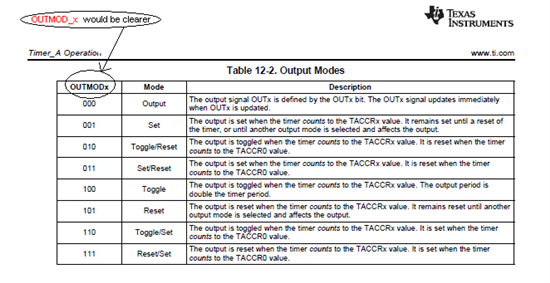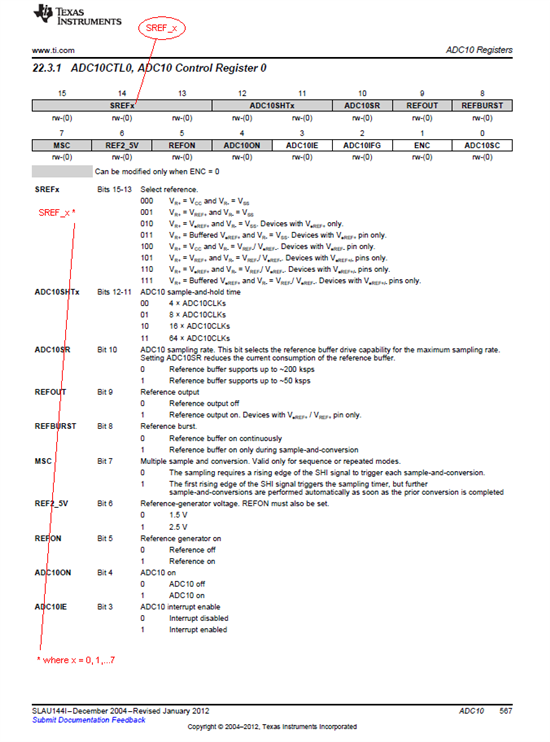In the MSP430G2553.h there are these definitions for the timer:
#define OUTMOD2 (0x0080) /* Output mode 2 */
#define OUTMOD1 (0x0040) /* Output mode 1 */
#define OUTMOD0 (0x0020) /* Output mode 0 */
and
#define OUTMOD_0 (0*0x20u) /* PWM output mode: 0 - output only */
#define OUTMOD_1 (1*0x20u) /* PWM output mode: 1 - set */
#define OUTMOD_2 (2*0x20u) /* PWM output mode: 2 - PWM toggle/reset */
#define OUTMOD_3 (3*0x20u) /* PWM output mode: 3 - PWM set/reset */



